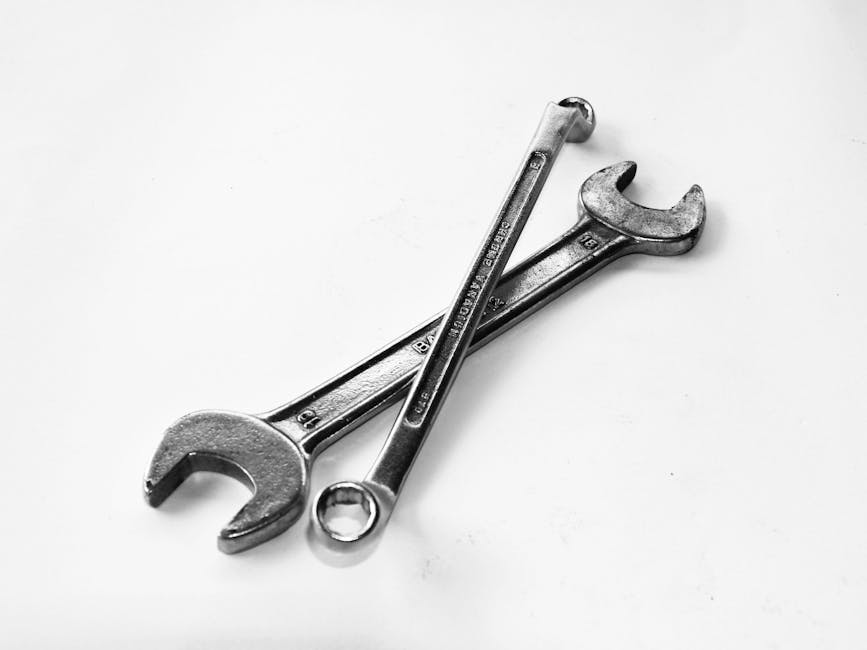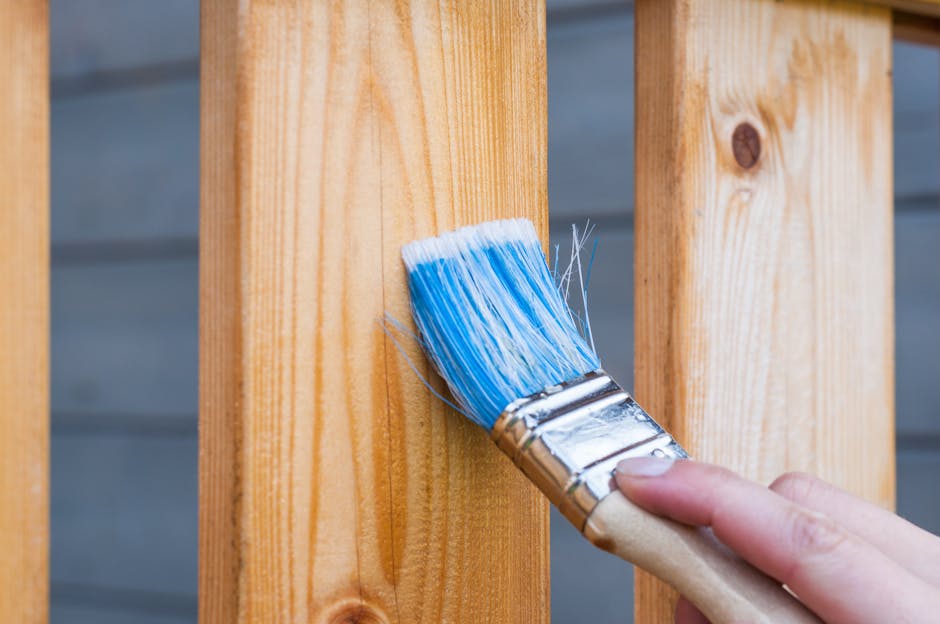Introduction
Credit repair. Sounds impressive, doesn’t it? But what in the world is it, really? It’s pretty straightforward; it’s all about fixing your credit reports, brushing off any errors, inaccuracies or outdated info that may be staining your creditworthiness. The ultimate goal? Lifting your credit score and being seen as a safer bet in the eyes of lenders. Plus, you can save some good cash as high scores often translate into lower interest rates.
You see, there’s another thing about credit repair: you don’t always need a professional to do it. Yup, you heard it right. With some time, patience, and adequate knowledge, anyone can get their hands dirty fixing their credit. This process is also known as do-it-yourself (DIY) credit repair, and it’s quickly gaining popularity. It might require the patience of a saint and the perseverance of a superhero, but hey, it can save you a nice chunk of change. So, why don’t we dive right into it, and unleash your inner credit repair guru? Let’s start the journey, folks.

Understanding Your Credit Report
Embarking on the journey of fixing credit reports may seem daunting. Before we begin, let’s first familiarize ourselves with what a credit report is and how it works.
What’s in a Credit Report?
A credit report is much like a report card. It is a detailed summary of your credit history, where lenders make a note of:
- Your outstanding debt
- Your credit history
- Whether or not you’ve paid your bills on time
This detailed information is gathered by credit bureaus to be turned into a comprehensive report. Key players in this process, like Equifax, Experian, and TransUnion, supply these reports to financial institutions.
The Importance of Your Credit Report
Why does your credit report matter, you may wonder? Your credit report influences many aspects of your financial life. It has a bearing on:
- Mortgage rates
- Loan approvals
- Apartment rental applications
Looking at your credit report every now and then is akin to taking your financial pulse – it helps smooth out life’s financial journey.
Regular Check Ups
Regular checks on your credit report are important due to the potential for errors. Even the best systems sometimes have mistakes, and credit bureau folks are no different. An FTC study found that one in five consumers had an error on at least one of their three credit reports. And let’s be real, the task of checking for mistakes falls on you.
Errors might range from simple typos in your address to more serious mix-ups, like someone else’s information appearing on your report. Regular checks can prevent incorrect information from remaining on your clean credit report. Remember, it’s one of those regular adulting tasks you need to do, like changing your car’s oil.
In conclusion, understanding your credit report forms the foundation of your DIY credit repair journey. Stay vigilant, folks!

Identifying Errors in Your Credit Reports
One of the crucial steps in your DIY credit repair journey is identifying errors in your credit reports. It may appear like a tedious and eye-straining task, but let me assure you – it’s as important as being that guy at the movies who spots a plot hole that no one else noticed.
A credit report is like a grade card of our financial souls – like it or not, it speaks volumes about our fiscal habits. Errors, inaccuracies or out-of-date information in your credit report, casually put, is akin to someone else dropping a banana peel and you slipping on it. They aren’t your fault, but they do mess up your credit score. And you don’t want that—just like you don’t want to spill your popcorn at the movies.
So how do you identify these pesky errors?
The process is straightforward. Grab your credit reports, make yourself comfortable, and examine every tiny detail. Look for incorrect personal information, accounts that aren’t yours, duplicate accounts, incorrect balance and credit limit, or outdated information.
And remember the part where I mentioned the impact on your credit score?
Well, let’s say errors are the proverbial pebbles causing ripples in your credit water body. Incorrect information can make you look like a risky borrower, leading to higher interest rates or worse, rejection of your loan or credit card applications.
So it’s not just about keeping things accurate. It’s like trying to create the perfect movie scene—you eliminate all the shooting errors to make it flawless. Identify errors, remove them, and set the stage for a brighter financial future. Because everyone deserves a star performance, right?

Disputing Errors with Credit Bureaus
So, you’re standing on the battleground of your credit report with a soldier’s gaze, ready to do what’s necessary. You’ve identified the errors. They’ve got no place there. Time for the next step: dispute.
Disputing an error on your credit reports is not as scary as it may seem. First off, gather the relevant documentation – copies of your credit reports where the mistake appears, proof of payment, identity documents, or any correspondence with creditors. Remember, this isn’t just a random shout into the void; you’re building a strong case, so keep your paper trails clean and clear.
Next, put the mighty pen to work. Write a dispute letter to each credit bureau that’s got an error on your report (that’s probably going to be Experian, Transunion, and Equifax). In this letter, clearly state the facts: who you are, what the issue is, and why it’s an error. Attach copies – not originals – of your supporting documents.
Don’t feel like getting writer’s block with this? The Consumer Financial Protection Bureau has your back. They’ve got a template letter all ready for you to use. Fill in the blanks, soldier.
Once done, don’t simply hit ‘send’. Keep copies of your dispute letter and the attachments. Now you can send them off — certified mail, return receipt requested. Why? Well, it’s additional proof, the timestamp sort of thing.
Now for a little patience. Under the Fair Credit Reporting Act, the credit bureaus have 30 days to respond. They’ll investigate the items in question, collaborating with the organization that provided the information. If the provider finds the disputed information is inaccurate, they must notify all three nationwide credit bureaus so they can correct the info in your credit report.
Keep track of all communication, keep checking your report, and keep good records. Remember, friend, this isn’t a quick fix, but a war of attrition against errors. You have the light of truth and the sword of documentation on your side. You’ve got this.

Setting Up Payment Reminders
If we’re keeping things simple, one fundamental truth about credit scores is this – pay your bills on time. Sounds like a no-brainer, right? Yet, many of us slip up, forgetting one payment, maybe two, and before you know it, your credit score has taken a hit. So here’s where setting up payment reminders or even better, automatic payments, can come in handy.
First off, let’s talk about why timely payments are essential. When determining your credit score, your payment history tends to weigh in heavily. It makes up about 35% of your FICO score, which is substantial. Meaning any missed or delayed payments can directly affect your overall credit score.
So, how do you set up these payment reminders? It’s straight up simple. Most billing systems today, whether it’s for your credit card, mortgage, student loan, or utilities, will have an option to set up automatic payments or send you reminder emails or text messages when a payment is due. This feature can help you ensure that the funds are always there when needed, eliminating the risk of late or missed payments.
Take the next step and set up automatic payments. This way, you don’t even need to think about it. You designate the date and amount, and the payment is made automatically every month. Just be sure to keep an eye on your bank balance to avoid unexpected overdrafts.
Remember, consistency is key here. One missed payment might not seem like a big deal, but since payment history makes up such a large portion of your credit score, consistent, on-time payments are a non-negotiable part of improving and maintaining your credit score.
In a nutshell, whether you opt for a traditional reminder or go automatic, the main point, is this: keep those payments coming in, paid in full, and on time. With a little practice and organization, it can become just another part of your monthly routine.

Reducing Debt
Let’s get real, reducing existing debt can sometimes feel like an uphill battle. But don’t worry, it’s possible to not only reduce, but totally eliminate your debt with the right game plan. Here’s how to go about it.
Step one? Get an accurate idea of your debt. Start by making a list of what you owe, including credit cards, student loans, mortgages, car loans, and even money owed to family or friends. Don’t skimp on the details here —knowing your enemy (debt, in this case) is half the battle won.
Now comes the tactical part where we discuss two popular methods usually adopted for paying off debt: the ‘avalanche’ and the ‘snowball’ method (no, we aren’t talking about any weather forecasts here).
Let’s begin with the avalanche method. It involves paying off your debts from highest interest rate to lowest, keeping up with minimum payments on all your debts. This method can save you more in interest payouts in the long run.
Then there’s the snowball method, which is just the opposite — paying off debts from smallest to largest balance. This approach won’t save you as much in interest, but sometimes the quick wins of paying off smaller debts provide the momentum folks need to stick with their plan.
The strategy you choose depends entirely on what keeps you motivated. Whatever you pick, keep in mind the goal is to bring your debt down to zero.
Remember, paying off debt is just like working out at a gym. It’ll be hard at first, but it gets easier the more you do it. Patience is key—you won’t see results overnight, but keep going and you’ll enjoy a debt-free life before you know it.
And hey, think of how sweet that post-debt life will taste. Seriously, it’s one of the best flavors out there. Now, get to work!

Building Up Your Age of Credit
The age of your credit, in simple terms, is just how long you’ve had credit. It’s a piece of the larger credit score puzzle and plays a surprisingly significant role in how those three magic figures are calculated. This consideration is divided into two categories by credit scoring models: the “average age” of your credit and the “age of your oldest account.”
First, let’s talk about importance. From a lender’s perspective, the longer you have managed credit (and done it successfully), the lower the risk you pose. It’s all about earning your stripes. Hence, a higher age of credit can positively impact your credit score.
Now, onto the building bit. Here, time is your friend, and patience, a much-needed virtue. No hacks, no shortcuts. However, you can make certain moves to give it a little nudge.
-
Keep old accounts open: The urge to clean house and close any unused credit accounts can be strong, but resist. These older accounts contribute to your age of credit and closing them might shorten it.
-
Become an authorized user: This savvy move involves becoming an authorized user on a family member’s (with excellent credit habits) credit card. You can piggyback on their good credit standing, and their card’s history could be factored into your credit report, potentially giving your credit age a boost.
-
Be selective when opening new accounts: New credit accounts can bring down your average credit age. Go slow, apply for new credit only when necessary.
-
Maintain good credit habits: While you can’t fast-forward time, paying bills on time, keeping credit utilization low can all lead to a healthier credit score.
Remember, Rome wasn’t built in a day, and neither is a strong age of credit. Don’t rush the process, play it cool, and let the magic of time work in your favor.

Increasing Your Credit Limit
Turn on the engines; it’s time to talk about increasing your credit limit and how it can jumpstart your credit repair journey. Thought of as a risky move by many, it’s actually a strategic maneuver; get it right, and you’re streaking towards a better credit score.
What do we mean by ‘credit limit’? Taking it back to basics, it’s the maximum amount your credit card issuer or lender allows you to borrow. Picture yourself at an open bar party, your credit limit is your alcohol tolerance – it’s the most you can comfortably handle.
But why would you want to increase your credit limit? Heck, wouldn’t that just encourage you to spend more, driving you deeper into debt? Relax, folks – there’s a method to the madness.
The answer lies in your ‘credit utilization ratio’. It’s a big, fancy term that means ‘how much of your available credit you’re using.’ If you’ve got a credit limit of $1,000 and you’re sitting on a $500 balance, your credit utilization ratio is 50%.
And here’s the kicker: the lower your utilization ratio, the better your credit score. By increasing your credit limit (without ramping up your spending), you automatically decrease your credit utilization ratio. Think of it as upgrading from a sedan to a minivan – there’s more space, but that doesn’t mean you fill it with junk.
However, tread lightly here. Lean on your credit smarts before requesting a lift in your limit. Avoid unnerving your lender with radical swings in your spending habits, and only go for it if you’re sure you can handle the additional credit without diving into an overdraft.
Increasing your credit limit isn’t about giving you more money to burn; it’s about improving your financial standing and demonstrating to potential lenders that you’re a trustworthy individual. Done right, it can be a go-to move for helping to repair that all-important credit score. Remember, slow and steady wins the race, champ! It takes some savvy budgeting, but as you’ve seen so far, DIY credit repair is far from impossible.

Self-help Credit Repair Tools
In the quest to repair your credit, you’ve got a myriad of tools and resources at your disposal that can provide the much needed assistance – and the good news is, they don’t have to be expensive. In fact, a number of these DIY credit repair tools are either totally free or come at a minimal cost.
First and foremost, you have credit report services such as AnnualCreditReport.com, which is authorized by federal law to provide you with a free copy of your credit report from each of the three major credit bureaus once a year. It’s a reliable service that allows you to regularly keep tabs on your credit report and catch any inaccuracies early.
Then there are budgeting apps like Mint and YNAB (You Need A Budget) which serve as nifty tools to keep on top of your daily expenses and manage your money wisely. These tools offer features that can help you track your spending, create budgets, and even provide alerts when you’re getting close to your budget limits. By understanding how money flows in and out of your life, you’ll make built-in strides in repairing your credit.
Credit simulation tools are also helpful for DIY credit repair. These tools, which are available through services like Credit Karma, provide a hypothetical scenario of your credit score. If, for instance, you’re considering paying off a chunk of your debt, a simulator will show you how that could impact your credit score. While they’re not 100% accurate––they’re widely recognized as great resources to envision potential outcomes of various financial maneuvers.
Lastly, you’ve got debt repayment apps like Unbury.me, a free tool that provides a clear path to helping you pay down debt. These apps can assist you in organizing your debts, projecting debt-free dates, and prioritizing which debts to knock down first using strategies like the debt avalanche or snowball method.
Enjoy the journey of repairing your credit, but relish in the freedom and ease these tools provide you. Take the time to fully leverage these resources and transform your credit repair into a successful DIY task.

Frequently Asked Questions About DIY Credit Repair
Often when people decide to embark on a DIY credit repair journey, they find themselves swimming in a sea of questions and misconceptions. It’s understandable, given that credit repair isn’t a topic commonly taught in school, but it is a vital one that can significantly impact financial health. To assist you on this path, we’ve addressed here some of the most frequented queries about DIY credit repair and added expert advice on best practices.
-
Is DIY credit repair really possible?
Absolutely, yes. DIY credit repair is possible, and doing it yourself can save you money in the long run. You just need to be persistent, organized, and patient, as it’s not something that can be fixed overnight. -
Can accurate but negative items be contested?
Broadly speaking, no. It’s important to note that if a negative item on your credit report is accurate, it should stay. Ethically and legally, you only have the right to dispute errors or inaccurate information. -
Where to start with DIY credit repair?
Start by getting a free copy of your credit report from each of the three main credit bureaus – Experian, Equifax, and TransUnion. Scour through these reports and identify any errors. Once identified, you’ll need to dispute these mistakes with each respective bureau. -
How long does it take to repair credit?
This differs from person to person as it is highly dependent on the complexity of your situation. Generally, you might see improvements in as little as a month, but on average, it can take anywhere from six months to a year. Remember, it’s a marathon, not a sprint. -
Can closing old accounts help me repair my credit faster?
This is a common misconception. Closing old accounts can negatively impact your credit score as it may decrease your total credit and increase your credit utilization ratio. So refrain from closing old but good standing accounts. -
Is it better to pay off my debt in full or make payments over time?
Ideally, paying off debt in full is the best option as it will reduce your credit utilization ratio. However, making regular, on-time payments will also help you build a positive credit history. It all comes down to what’s financially feasible for you at the time.
Remember that it’s easy to become overwhelmed in the process of DIY credit repair. The key is to stay patient, stay informed, and remember that just because it’s a DIY project, doesn’t mean you’re alone. A wealth of knowledge and resources are available to assist you every step of the way.

Measuring Your Progress
Now, onto the less glamorous but equally as important aspect of DIY credit repair: tracking your progress. They say the devil is in the details, and in this case, they couldn’t be more spot-on. To truly gauge the efficiency of your efforts, you’ve got to keep tabs on the changes in your credit score and report—consistently.
There’s no magic spell here—improving your credit score can be a slow process. It’s like watching paint dry or waiting for water to boil. It’s not going to happen instantaneously, so bracing yourself for the long haul is vital. Every little tweak you’ve made will matter, but it’s going to take some time to fully see these changes reflected in the numbers.
Now, how do you go about measuring your progress? Regularly check your credit reports and scores. Sign up for a credit monitoring service if possible. Most of them let you see your credit score and an overview of your credit report for free.
Make a habit of scrutinizing your report for any changes, regardless of how insignificant they may seem. Keep an eye on how your score is evolving, look for upward trends. Take note of any decrease, too—it might indicate an incorrect info or a newly reported debt. Little things can reveal trends.
Sure, checking your credit report doesn’t directly boost your credit score. But being aware of your credit standing and knowing how certain actions impact your score will guide your future decisions on this DIY credit repair journey.
Patience is key here. One of the critical understandings about this process is that it’s a marathon, not a sprint. So, don’t be discouraged by slow progress. Keep at it, stay consistent, and small improvements will lead to big results in the long run.
Because remember, Rome wasn’t built in a day, and neither will your credit score. It’s a complex, delicate system, surprisingly susceptible to errors that could drag it down. But armed with knowledge and a little tenacity, you can repair your credit score one step at a time.

Conclusion
Wow, we’ve covered quite a lot! Let’s take a quick recap of what we’ve explored so far.
The Concept of Credit Repair
We started off by de-mystifying the elusive concept of credit repair. We then introduced a hands-on DIY approach to turn the situation around.
Understanding Credit Report
The journey involved guiding you through the process of understanding your credit report. We highlighted the importance of identifying potential foul plays or discrepancies and dealing with them promptly by disputing errors with credit bureaus.
Debt Management Strategies
Next, we lightened the ‘debt weight’ off your back by presenting a manageable plan to reduce your existing financial commitments. We suggested setting up pay reminders or going automatic for a more organized payment system.
Key Factors Influencing Credit Score
We introduced two major factors that contribute to a solid credit score: ‘age of credit’ and ‘credit limit’. We showed you how to responsibly improve these aspects to positively impact your credit utilization ratio.
Self-help Credit Repair Tools
We provided you with a series of self-help credit repair tools to aid your DIY credit repair journey. We also answered some likely questions you might have about venturing into DIY credit repair.
The Long-term Approach towards Credit Score Improvement
Understanding that improving your credit score is not a sprint, but a marathon, is key. It requires a sturdy monitoring system, patience, and consistent effort for noticeable results. Remember, slow and steady wins the race!
Start Your Journey Today
Start small. Begin today. It might seem overwhelming now, but remember, the view from the top is always worth it. Just like an apple a day keeps the doctor away, a step a day towards credit repair keeps money woes at bay.
Embrace the autonomy and satisfaction that come with improving your own credit health. After all, who better to count on than yourself, right?